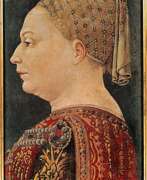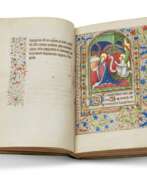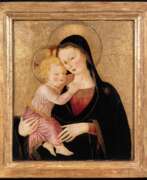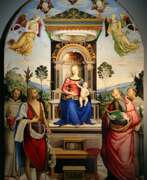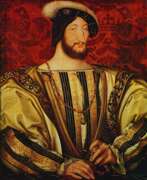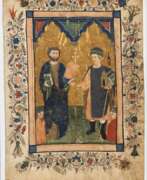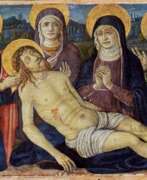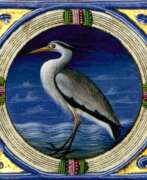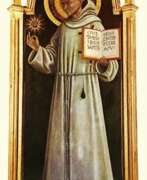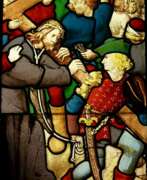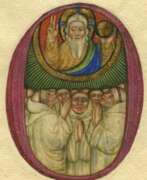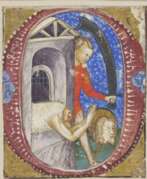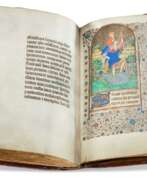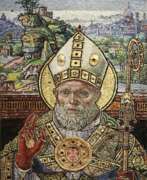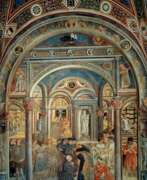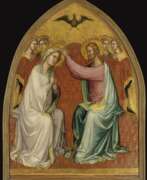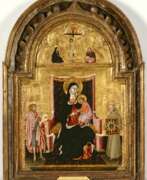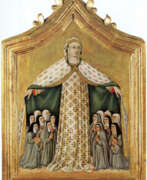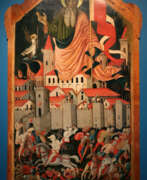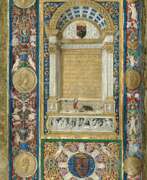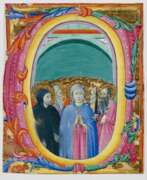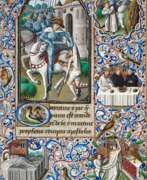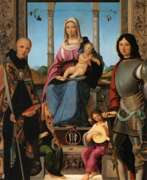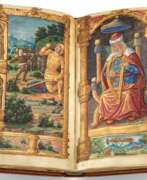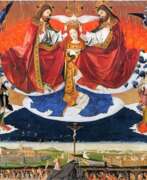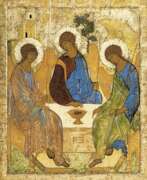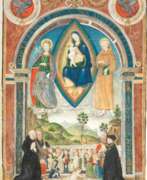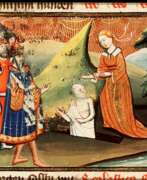Miniaturists 15th century
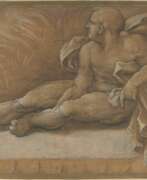

Amico Aspertini was an Italian Renaissance painter, draughtsman, and sculptor, considered one of the leading representatives of the Bolognese school of painting.
He was trained in the family workshop and was influenced by the artists of the Ferrara school, Ercole de'Roberti, Lorenzo Costa, and Francesco Francia. He worked as a painter and sculptor, and was also an excellent draughtsman, as evidenced by his many surviving drawings and sketches. Contemporaries marveled at his complex and impulsive character and noted that he worked with both hands simultaneously.
Aspertini painted splendid portraits as well as numerous frescoes and altarpiece paintings in chapels and churches in Italy. Many of his works are eccentric and eclectic, even whimsically fantastical, his complex style anticipating Mannerism.
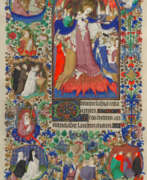

The Master of Bedford was a French miniaturist and manuscript illustrator.
This master of the chapbook worked in Paris from 1405-1435 and is considered one of the most important 15th-century illuminators. He ran an influential workshop in Paris. The artist received his name after his work on two books, which he decorated with illustrations for John Lancaster, Duke of Bedford. One of these, The Bedford Hours, is considered one of the most outstanding illuminated manuscripts extant from the medieval period, with numerous illustrations and extensive decoration, including more than 1,200 decorative medallions that appear in the margins of each page.
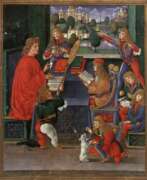

Giovanni Pietro Birago was an Italian painter, illuminator, and engraver for the Sforza court.
He worked from 1470 to 1513 in Brescia, Venice, and Milan, was a leading Milanese illustrator and was favored by the ducal court.
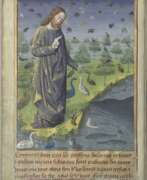

Jean Colombe was a French miniaturist and manuscript illustrator. He founded a dynasty of illuminators, including a son and grandson who continued his work even after his death.
Colombe is known to have decorated a large number of manuscripts. He was commissioned to illustrate both secular and religious texts, and he depicted scenes with many characters in elaborate architectural structures or landscapes. His illuminated manuscripts were decorated with gold or silver, brilliant colors, intricate drawings, or miniature images. Jean Colombe was patronized by Charlotte of Savoy, wife of Louis XI and a noted bibliophile. He illustrated manuscripts for the queen, her daughter Anne Beaujault, and members of the court. Colombe also entered the service of her nephew, Charles I, Duke of Savoy, who commissioned him to complete two unfinished manuscripts in his library: the magnificent Apocalypse of Jean Baptiste and Perronet Lamy and probably the most famous of all the Chapels, The Rich Estates of the Duke of Berry by the brothers de Limbourg.
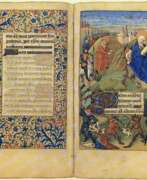

The Master of Marguerite de Foix was a French miniaturist and illuminator who worked in the second half of the 15th century.
The unknown master was named after Princess Marguerite de Foix of Navarre, for whom he created the Chapel. The artist stands out for his expressive skill in depicting figures and their clothing.
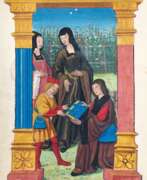

Philippe de Gueldre was a French painter, illustrator, and miniaturist from the Netherlands.
He worked on a large number of royal commissions in Paris and northern France at the turn of the 15th and 16th centuries. Philippe's style was influenced by Jean Columbus; he was characterized by wide-boned figures with round faces, long noses, and small red mouths. He makes generous use of blue and gold, burgundy and green in his palette.
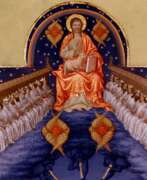

Pol de Limburg, also Paul van Lymborch or van Limburg, was an early 15th-century French miniaturist from the Northern Netherlands.
Together with his two brothers, Herman and Jean, Pol worked in Paris. As teenagers, all three entered the service of Jean de France, Duc de Berry. It was for him that two of the most lavishly illustrated books of hours (a popular form of private prayer book at the time) were created.
Pol evidently had the greatest skill among the brothers and to him belongs the bulk of the work. After the completion of the Red Gazetteers, the brothers set to work on the Duke de Berry's Three Rich Gazetteers. This work, considered their greatest creation, belongs among the finest examples of the International Gothic style.
The Limburg brothers left The Rich Days of the Duke de Berry unfinished, as they died almost simultaneously in 1416, possibly during a plague epidemic.
The Limbourg brothers are the best known of all late Gothic manuscript illuminators. Together they synthesized the innovations of other illuminators and developed a style of their own, characterized by fine lines, painstaking technique, and minute detail. Their "Rich Days of the Duc de Berry," completed about 1485 by Jean Collomb, is one of the milestones in the art of book illumination. It greatly influenced the course of early book illumination and foreshadowed the paths of Northern Renaissance art.
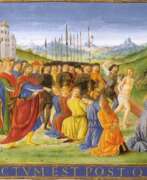

Attavante degli Attavanti, also Gabriello di Vante, is the best known and most representative artist of Italian miniature painting.
Attavante's elegant, expressive style was influenced by the work of Domenico Ghirlandaio and Antonio Pollaiuolo. His first recorded work, dated 1483, is a missal created for Thomas James, bishop of the Dol-de-Bretagne. He subsequently created several manuscripts for Matthias Corvinus, King of Hungary, and the Medici family, among whom was Pope Leo X. The workshop of Attavante also produced the Jerome Bible, one of the finest bibles created during the Italian Renaissance, now in the Portuguese National Archives.
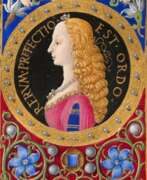

Francesco di Antonio del Chierico was an early Renaissance Italian painter, illustrator, and jeweler in Florence.
He trained as a goldsmith but later became a highly successful and revered manuscript illustrator. His work was sought after by the patrons of Florence in the second half of the fifteenth century, and he is also considered a favorite artist of Lorenzo de' Medici.
Francesco del Chierico decorated and illustrated books of all sizes that covered a variety of literary, scientific, historical, and religious subjects. He creatively painted manuscript margins as well as full pages. The artist's illustrations often included intricate floral compositions, and he also painted exquisite portraits.
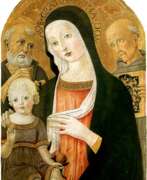

Benvenuto di Giovanni di Meo del Guasta, an Italian painter hailing from Siena, was recognized for his compelling panel paintings, frescoes, and manuscripts produced over a span of 43 years, during the Renaissance period. Born around 1436, his work life was largely based in Siena, where he was first documented as a young artist in 1453. His teacher was likely Vecchietta, with whom he collaborated on fresco decoration in Siena's baptistry. Di Giovanni married Jacopa di Tommaso da Cetona in 1466, which marked the beginning of a productive period that saw the creation of notable works such as the Annunciation and Saints (1466) and the Nativity (1470).
Benvenuto di Giovanni's style was characterized by its noble, classical forms and bright, intensely lit, glassy consistency, influenced by his interaction with North Italian miniaturists like Liberale da Verona and Girolamo da Cremona. His works, such as the triptych from Montepertuso (1475), the Borghesi altarpiece, and the triptych in the National Gallery, London (1479), stand as masterpieces of his sharply defined and surreal world. In the later years of his career, di Giovanni was commissioned for floor designs in the Siena cathedral and miniatures for its choir books, showing a style that occasionally simplified due to collaboration with his son, Girolamo di Benvenuto, but remained distinctively his.
Significant works by Benvenuto di Giovanni include "The Adoration of the Magi" and "The Crucifixion," both showcasing his mastery in perspective and religious narrative. For collectors and experts in art and antiques interested in the evocative and historically rich works of the Renaissance, Benvenuto di Giovanni's oeuvre offers a captivating exploration of 15th-century Sienese artistry.
To stay updated on sales and auction events featuring works by Benvenuto di Giovanni, sign up for updates. This subscription ensures that enthusiasts and collectors are always informed about new opportunities to engage with the exquisite works of this renowned Renaissance artist.
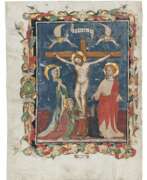

Jacopo di Paolo was an Italian painter and illuminator who worked in Bologna during the fourth and fifth centuries.
Jacopo was a very versatile artist, working in several of the city's famous decorative studios and collaborating with sculptors to create drawings for sculptures. He was also involved at various levels in the political and cultural life of the city. Jacopo was enrolled in the Guild of Artists and Jewelers and held many public positions in Bologna. Jacopo's influence in Bologna lasted for half a century and his three sons also became artists.
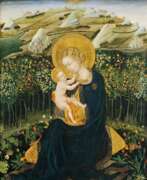

Giovanni di Paolo di Grazia was an Italian painter, working primarily in Siena, becoming a prolific painter and illustrator of manuscripts, including Dante's texts. He was one of the most important painters of the 15th century Sienese School. His early works show the influence of earlier Sienese masters, but his later style was more individual, characterized by cold, harsh colours and elongated forms. His style also took on the influence of International Gothic artists such as Gentile da Fabriano. Many of his works have an unusual dreamlike atmosphere, such as the surrealistic Miracle of St. Nicholas of Tolentino painted about 1455 and now housed in the Philadelphia Museum of Art, while his last works, particularly Last Judgment, Heaven, and Hell from about 1465 and Assumption painted in 1475, both at Pinacoteca Nazionale (Siena), are grotesque treatments of their lofty subjects. Giovanni's reputation declined after his death but was revived in the 20th century.
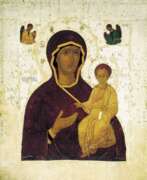

Dionisius, a distinguished Russian icon painter born around 1440, emerged as a pivotal figure in the Moscow school of icon painters, particularly towards the late 15th and early 16th centuries. His work is characterized by a unique style known as Muscovite mannerism, which features elongated figures, diminutive hands and feet, and serene, peaceful faces. Dionisius's artistry is most notably encapsulated in his comprehensive and best-preserved work, the fresco painting of the Virgin Nativity Cathedral at the Ferapontov Monastery, which stands out for its singularly pure and gentle colors, imbuing the scenes from the life of the Virgin with a solemn and festal mood.
Throughout his career, Dionisius enjoyed the patronage of many rich and notable figures, including Joseph of Volokolamsk, who commissioned him to paint over eighty icons for various cloisters. His first significant commission was for the Cathedral of the Dormition in the Moscow Kremlin in 1481. His Crucifixion icon, created in 1500, is particularly revered and showcases a novel approach to depicting this key scene in the Christian tradition, focusing on Jesus Christ, the Blessed Virgin Mary, and John the Theologian with an emphasis on suffering and redemption.
Dionisius's legacy extends beyond his own works to include several iconic panels attributed to him, showcasing various religious figures and scenes that profoundly influenced Russian art and iconography in the centuries that followed. His depictions often featured innovative elements, such as the personified Church and Synagogue, underscoring his significant impact on the development of Russian Orthodox art.
For collectors and experts in art and antiques, Dionisius's work represents a quintessential chapter in the history of Russian iconography, offering a deep well of cultural, historical, and artistic significance. To stay informed about new discoveries and auction events related to Dionisius's work, signing up for updates can offer valuable insights and opportunities to engage with this remarkable aspect of Russian heritage.
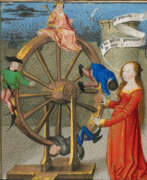

Maitre de Coëtivy, born Colin d'Amiens, was a French artist, illuminator and painter, one of the recognized artists of the French court.
Contemporaries considered this master to be the most important artist working in Paris in the third quarter of the century. The master was named for the Book of Hours, which he illustrated for the chamberlain of Charles VII, Olivier de Coetivy. Maitre de Coëtivy also created panels, worked on stained glass and tapestries. Among his famous clients was Louis XI's brother, Charles of France; his works decorated the great church of Saint-Severin in Paris and the royal courts.
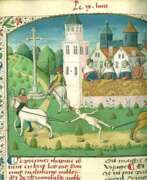

Maître François was a French illustrator who worked in Paris in the 1460s-1480s.
The identity of Maître François as an artist is first mentioned in a letter written by Robert Gauguin in 1473. Most of the prestigious commissions from the court and leading ecclesiastical figures of the time were carried out in François' studio. In Paris in the second half of the fifteenth century, one can trace the predominant style of illumination by the works of Master Jean Rolin, Maître François, and Master Jacques de Besançon. Bibliophiles close to the royal court encouraged the work of miniaturists through private commissions. In particular, Jacques d'Armagnac owned six manuscripts of Maitre Francois and his entourage.
Boccaccio's De casibus virorum illustrium was very popular in the 15th century, where the author retells the fates and downfalls of famous personalities from the Bible, antiquity and medieval history, ending with Boccaccio's own contemporaries in 14th-century Florence. For a long time this book was even more famous and successful than Boccaccio's Decameron. The text was translated into French in 1409 for Jean, Duke de Berry, by his secretary Laurent Premieffe. And the illustrations for the book were later created in the workshop of the then respected Maître François.
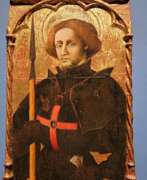

Bernat Martorell, a Catalan painter, was a pivotal figure in the International Gothic style in Catalonia. His works, primarily religious in theme, are revered for their vivid portrayal of drama and violence, often featuring the martyrdom of saints like Saint Eulalia, Saint Lucy, and Saint Catherine. Martorell's unique style, influenced by contemporary Flemish painting, brought a new level of detail and color richness to Catalan art.
Among his notable works are the Saint George Killing the Dragon, housed at the Art Institute of Chicago, and the Retable of Saint Pere de Púbol, displayed in the Museu d'Art de Girona. These pieces exemplify Martorell's mastery in composition and his pioneering role in Catalonian art. His altarpieces, including those of Saint Vincent and Saint Lucy, further showcase his exceptional talent and influence on the Catalan art scene.
For collectors and experts in art and antiques, Martorell's legacy in the realm of medieval art is unquestionable. His works are a testament to the rich cultural history of Catalonia. To stay updated on new product sales and auction events related to Bernat Martorell, sign up for our updates. This subscription is your gateway to exploring the intricate beauty of Martorell's art and its impact on the world of painting and sculpture.
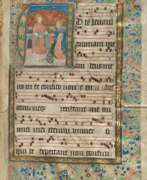

The Master of the Ghent Graduel was a Flemish painter, miniaturist, and illuminator who worked in Ghent and Tournai in the second third of the fifteenth century.
This master comes from an older, Parisian tradition of manuscript illumination that was developed by the master Gilbert de Metz. He was active in the 1460s-1470s and was responsible for the illumination of the clockbooks now preserved in British libraries and also created the miniatures for the books of Valerius Maximus.
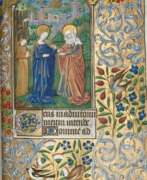

Master of the Rouen Échevinage was a French artist, one of the leading 15th-century Rouen illustrators, named after the magnificent manuscripts he painted for the Bibliothèque des Echevins in Rouen. He was active between the 1450s and 1480s.
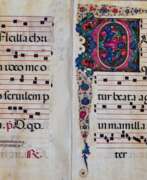

Venturino Mercati, also known as Venturino da Milano, Venturino di Andrea dei Mercati, Venturino di Andrea dei Mercati, was a 15th-century Italian miniaturist.
The son of a Mercati jeweler, he was active from 1467-1480 and illuminated among other things chorales for cathedrals and choir books. He worked in Lombardy, Tuscany and Emilia. Mercati is known to have lived in and around Siena from 1472, working here for the Opera del Duomo, collaborating with Francesco di Giorgio di Martino, Girolamo da Cremona and Liberale di Jacopo da Verona.
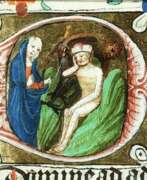

Master of Zweder of Culemborg was a Dutch luminary painter who worked mainly in Utrecht in the first half of the 15th century.
The anonymous master got his name from the bishop of the city, Zweder van Culemborg, whom he depicted.
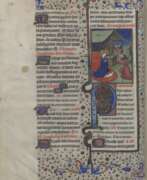

Master of the Troyes Missal de Troyes was a French book illustrator who worked in Troyes in the mid-15th century.
The artist got his name from the missal (liturgical book) he illustrated, which is now preserved in Paris. The master is considered one of Troyes' most brilliant illustrators circa 1450. Contemporaries described him as "the most prominent figure in Troyes' illuminations of the mid-15th century. Troyes was the main center of book production in Champagne during the second half of the 15th century, when the region's lavish manuscripts made it an alternative to Paris, and the master of Troyes books was the most sought-after artist in that city. The widespread demand among devout laymen for the Book of Hours (the most popular liturgical text of the Middle Ages) brought the Troyes master many commissions.
Elegantly elongated figures with flat faces, richly brocaded tapestries, and checkered green floors are hallmarks of the artist's work.
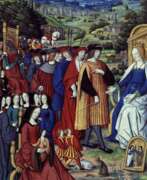

Jean Pichore was a French painter, illustrator, and miniaturist.
He was one of the most famous and prolific illuminators in the production of horologers in Paris at the beginning of the 16th century. Between 1490 and 1521, he was head of a rather large workshop which carried out many orders, while he himself produced only selected works. Jean Pichore worked in many fields, including altarpiece painting, stained glass windows, tapestry designs and illuminated manuscripts.
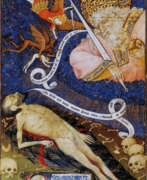

The Rohan Master is the name given to an unknown French illustrator in honor of his participation in the work on the manuscript known as the Rohan Clock.
The artist worked in the first half of the 15th century. He is known to have worked as a young man in the Champagne region of France and then moved to Paris around 1415-1420, where he established a large studio and collaborated with other illustrators. His work during this period included not only books of hours but also several secular manuscripts.
The influence of the Parisian artists of the time, Master Boucicault and the Limbur brothers, can be felt in the work of Master Rohan, but his style is characterized by an extraordinary expressiveness.
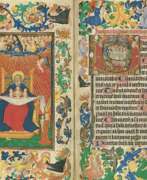

Master Gijsbrecht van Brederode was a Northern Dutch book illuminator who worked in Utrecht in the 3rd quarter of the 15th century.
The artist got his name from the book of hours, which he illuminated for Gijsbrecht van Brederode, dean of Utrecht Cathedral (died in 1475). It is known that between 1465 and 1470 this master created almost all the miniatures in this manuscript.
